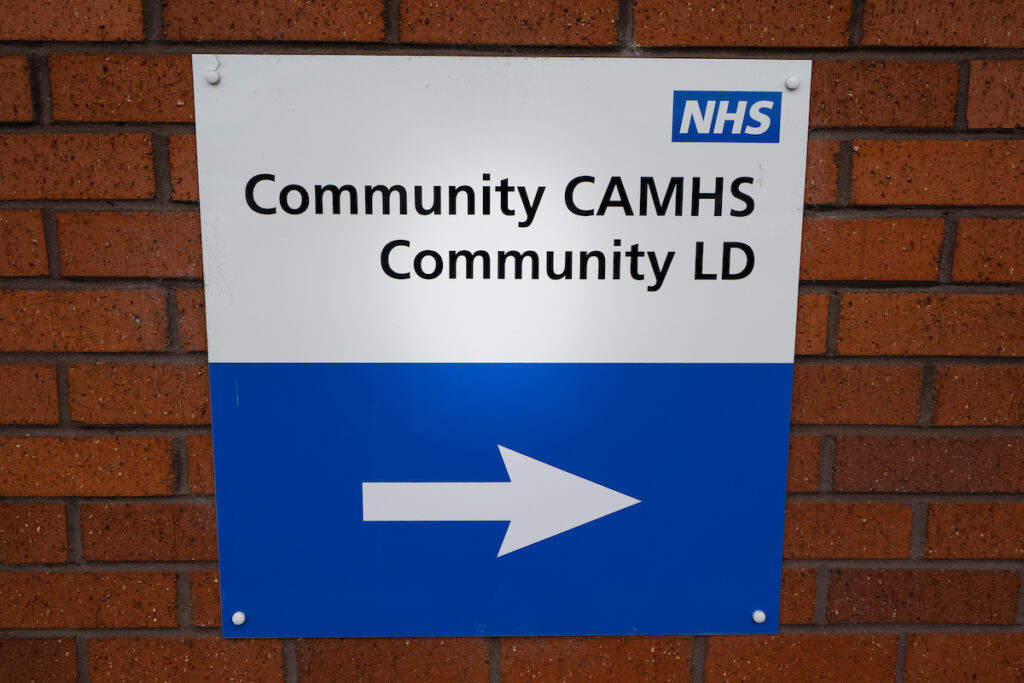
For decades, psychiatric research has been focusing on identifying people who are at risk of developing psychosis, yet only a small percentage of individuals accessing mental health services are identified as ‘high-risk’. The gap in literature highlights the need to explore better approaches to psychosis prediction. Child and Adolescent Mental Health Services (CAMHS) provide support to children and adolescents, and although psychosis and bipolar disorder is uncommon, it could present a high-risk system for severe mental health difficulties in adulthood.
Lång and colleagues (2022) hypothesised that contact with CAMHS may be both a marker of early signs of psychosis or bipolar or an indicator of other risk factors and hence, such service contact by a young person may serve as a useful alternate method to the clinical high-risk paradigms used often in research.

Is contact with Child and Adolescent Mental Health Services (CAMHS) a marker of early signs for psychosis or bipolar disorder?
Methods
The authors utilised Finnish health records to construct a total population cohort study of all those born in 1987 (n=55,875) until they reached the age of 28 i.e., 2015. In this cohort, the investigators identified all those who had accessed CAMHS and all those who had attracted a diagnosis of a psychotic or bipolar disorder by the age of 28 (n=1,785).
The study drew data from the Finnish Birth Cohort Study (1987), which was then linked to data from the Medical Birth Register (gender, date of birth), Digital and Population Data Services Agency (emigrations), and the Register for Health Care. This latter dataset included the variables of information – namely, the exposure of CAMHS contact and type of contact (inpatient/outpatient) and the outcome and diagnosis (using ICD-9 for 1987-1997 vs. ICD-10, for 1996-2015). The same Care Register was used to collate information on non-organic psychotic disorders and bipolar disorders. Importantly, the authors included depression with psychotic features, as well as schizophreniform psychosis and bipolar.
People who had died, emigrated or had moderate/profound intellectual disability were excluded from the analyses. The rates of bipolar and psychosis were calculated in this sample, and the odds ratios (OR) of these outcomes calculated in those who had or didn’t have the exposure of CAMHS contact as defined exposure. For those who didn’t attract a diagnosis within three months of this contact, median time until diagnosis of bipolar of psychotic disorder was calculated. Additional analyses broke down outcomes by subtypes of the exposure – i.e., CAMHS inpatient vs. outpatient, and index diagnosis was defined as that which was attributed in the admission or within the first three months of initial CAMHS contact.
Results
The total sample analysed was 55,875 individuals, of which 48.5% were females. 7,011 (12.5%) had one or more CAMHS contacts (age 0-17), and 2,261 (4%) had at least one CAMHS admission.
Across the whole sample, 1,785 (3.2%) had a diagnosis of any psychotic or bipolar disorder by aged 28. The percentage of individuals receiving their first diagnosis after 18 was 80.6% for any psychotic or bipolar disorder. Of those who had no CAMHS contact (n=44,864; 87.5%) there were 889 cases of psychosis or bipolar (1.8%); whereas in those with CAMHS contact (n=7,011; 12.5% of cohort), as defined in this study, 12.8% (n=896) had received a diagnosis of psychosis or bipolar disorder by the age of 28. This generates an OR of 7.9 for the outcome of psychosis or bipolar disorder if they had a CAMHS contact. Of all the diagnosis of bipolar or psychosis in the cohort, 50.2% had a history of CAMHS contact, with 83.4% of these diagnoses being received over 3 months after initial CAMHS contact, with a median latency until diagnosis of 6.5 years.
Breaking down the types of CAMHS contact, of those with at least one CAMHS admission 24.0% were diagnosed with psychosis or bipolar disorder by the age of 28, in comparison to 2.3% of those without an admission. Of those with a diagnosis of psychosis or bipolar in the cohort, 11.5% had had a first CAMHS admission before 13 years of age, and 36.5% between 13-17 years of age.
The authors examined index diagnosis in their cohort and a broad range of diagnoses were found. Interestingly, those who attended CAMHS and didn’t attract a diagnosis had the same risk of psychosis or bipolar as those who did receive a diagnosis. The most common diagnoses for those who went on to develop psychosis or bipolar disorder were depressive other mood disorders, or disruptive behavioural disorder, and these people were less likely to be diagnosed with a neurodevelopmental disorder.
Of all diagnoses of any psychotic or bipolar disorder, 23.1% (n=412) had had a CAMHS admission between 13-17 years of age, with 57.5% after their first admission with a median latency until diagnosis of 3.0 years.

Half of all psychosis and bipolar diagnoses by the age of 28 years old occurred in individuals who had contact with CAMHS during childhood or adolescence.
Conclusions
The authors indicated that the:
total population study of all individuals born in Finland in 1987 and followed up to 28 years, half of all psychosis and bipolar diagnoses occurred in individuals who had attended CAMHS during childhood or adolescence.
This has important implications for practice and prevention.
Further, there was a median latency of around 6 years between CAMHS contact and diagnosis of psychosis or bipolar, offering a potentially large window for intervention and support.
These findings suggest that service use and clinical contact in childhood may offer a new paradigm for high-risk research and an important way to detect young people at risk of bipolar or psychosis.

Of those with a diagnosis of psychosis or bipolar, 11.5% had a first CAMHS admission before 13 years old, and 36.5% between 13-17 years old.
Strengths and limitations
This paper details an incredibly well-conducted study and important contribution to the literature in predicting onset of mental disorders in young people. A great strength of the paper is that, by capturing a whole cohort of the Finnish population, we can be confident that these findings are valid for that population (they are not a subsample but capture all those born in 1987). However, there is a small caveat to that; for example the exclusion of those who had died or emigrated, and the differences from the wider population in terms of their risk of psychosis or bipolar. These are likely to be relatively small numbers and make little impact on the findings. The other point to note is that the follow-up period ends at 28, so later diagnoses, which may differentially impact on women, will be missed here.
The strength of sampling the whole population of Finland born in a certain year is also potentially one of the limitations. We simply don’t know whether the young people who access CAMHS are the same in Finland as elsewhere, and specifically, the coverage of CAMHS in other countries. We know that in many countries children and adolescents who have mental health problems do not access CAMHS, or are unable to access mental health support even if they are trying to. Moreover, if they do access CAMHS, thresholds for inpatient care may differ based upon wider models of care internationally. Lång et al’s important work give us strong empirical support for the importance of clinical pathways in predicting mental disorder.

The findings might not be generalisable in other countries with different healthcare care and pathways for children and adolescents.
Implications for practice
For me, the key implication of the study is that people accessing CAMHS, particularly people who experienced inpatient care in adolescence, should be considered for regular review. Once reaching adulthood, screening and assessment for bipolar and psychosis should be available in the adult mental health services. Hopefully, these measures will limit the duration of non-treatment.
Furthermore, we have a time window between CAMHS contact and provision of diagnosis for an early intervention. This could potentially prevent bipolar or psychosis, or improve the prognosis if such disorders develop. Hence, ameliorating risk prediction in combination with other variables, as well as developing safe and acceptable interventions for young people who have had CAMHS contact are important avenues for future research and practice.

Improving risk prediction and developing safe interventions for young people with prior use of CAMHS are clinically important avenues.
Statement of interests
None.
Links
Primary paper
Lång, U., Ramsay, H., Yates, K., Veijola, J., Gyllenberg, D., Clarke, M.C., Leacy, F.P., Gissler, M. and Kelleher, I., 2022. Potential for prediction of psychosis and bipolar disorder in Child and Adolescent Mental Health Services: a longitudinal register study of all people born in Finland in 1987. World Psychiatry, 21(3), pp.436-443.
Photo credits
- Photo by ThisisEngineering RAEng on Unsplash
- Photo by Markus Spiske on Unsplash
- Photo by Andriyko Podilnyk on Unsplash
- Photo by Annie Spratt on Unsplash
- Photo by Louis Hansel on Unsplash
